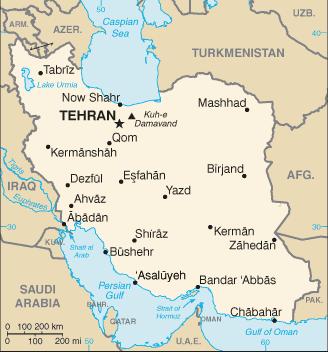
Iran’s Fragile Rise
While the recent nuclear framework agreement between the P5+1 and Iran is a major step towards ensuring that Tehran does not obtain nuclear weapons, some justifiably point out that a final deal might turn Iran into a “second Saudi Arabia,” albeit one that will wreak much havoc throughout the Middle East and beyond. As Benjamin Netanyahu put it, “Iran is going to have sanctions lifted…And that’s going to have billions and billions of dollars flow into the Iranian coffers…to pump up Iran’s terror machine throughout the world.”
Such concerns are understandable, but they are also overstated. Iran is a rising force in the region, but one whose power is far more fragile than assumed by many observers.
To begin with, lifting of the sanctions might not drastically improve Iran’s financial situation. In order to balance the 2015 budget, Iran will need the price of oil at $130.70 per barrel or more. Currently, the market price stands at approximately $59. Consider the possibility that there is a final deal, and more Iranian oil eventually enters the global market. With more supply, the price of oil could remain low and could drop even further. Iran, along with other oil producers, could decide to cut its supplies to raise the price, but such a move might only help the energy industries in the Western hemisphere expand, resulting in long term market share and revenue losses. Iran is in a Catch-22 situation.
Furthermore, sanctions are not the only factors that have been hindering Iran’s economy which suffers from structural problems caused by previous Iranian President Mahmoud Ahmadinejad’s populist economic policies. Fixing the issues will be difficult during the current era of low oil prices. Bringing foreign investment to revive Iran’s poorly maintained oil and gas industries will also take time and might require economic liberalization. Doing so means challenging the country’s powerful vested interests. Catching up with Turkey and Saudi Arabia, the two regional economies that are more than twice the size of Iran’s economy will be a massive challenge for Tehran, if such a goal is even attainable.
Iran’s attempts to spread its influence throughout the Middle East have also seen mixed success, particularly since the onset of the Arab Spring. Before 2011, Iran’s satrap, Bashar al-Assad, controlled the entirety of Syria. Today, Syria is fragmented among many fighting factions, many of them hostile to the al-Assad regime and Tehran. The civil war in Syria also threatens Iran’s line of supply to Hezbollah, a proxy group of Iran in Lebanon. While the al-Assad regime is not in danger of falling any time soon, it is not on the verge of victory either. The long term survival of the Syrian regime is not guaranteed.
In Iraq, the central government in Baghdad, under heavy influence of Tehran, used to control most of Iraq’s territory under Nouri al-Maliki’s oppressive sectarian rule. Today, the Islamic State controls a swath of territory in northwestern Iraq, while the Kurds in northeast Iraq have become more autonomous than before. In addition, while Baghdad has become even more dependent on Tehran than before, U.S. presence and involvement in Iraq have also increased with the rise of the Islamic State. In fact, the recent operation to take Tikrit could not be completed without U.S. airpower and has revealed the limits of Iran-supported Shiite militias.
Some argue that Iran is ascendant in Yemen because of Tehran’s support of the al-Houthis, prompting many (including the Iranians themselves) to flaunt that Iran now controls four Arab capitals. Yet, the al-Houthis are not Iranian puppets. Zaidis are fiercely independent and have a decades-old history of resisting successive Yemeni governments’ control with or without Iranian support. Zaidi Shiism, practiced by the al-Houthis, is also different from Iran’s Twelver Shiism. Zaidi religious practices and beliefs are in fact closer to those of Sunni Islam. The al-Houthis are also under attack by a coalition led by Saudi Arabia, while Iran has been unable to provide the same level of support to the al-Houthis.
Iranian power is significant, but fragile. Oil prices will never return to the 2008 levels. Sunni resistance against Tehran will only grow, as demonstrated by the recent joint Arab force initiative. A successful nuclear agreement and consequential lifting of sanctions will not make Iran a superpower but are, in fact, likely to prevent an even worse outcome – a truly nuclear-armed Iran.
Sungtae “Jacky” Park is the Middle East, Technology, and Nuclear Security Analyst at the American Security Project.






[…] Iran’s Fragile Rise Sungtae “Jacky” Park Iran is a rising force in the Middle East, but one whose power is far more fragile than assumed by many observers. […]
[…] Iran’s Fragile Rise […]
[…] Iran’s Fragile Rise […]